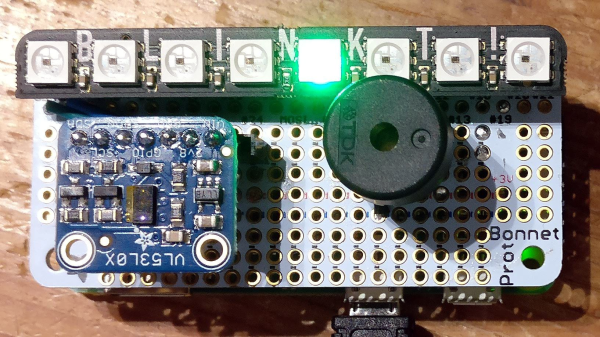The Pomodoro Technique has helped countless people ramp up their productivity since it was devised in the late 1980s. Breaking down tasks into 25 minute chunks can improve your focus tremendously, provided you show up, start the timer, and get to work.
Lazydoro takes the psychology focus even further. In [romilly.cocking]’s interpretation, a time-of-flight (ToF) sensor is your productivity Santa Claus — it knows whether you’re doing your part by simply applying butt to chair, and your present is a productive 25 minutes where not a second is wasted futzing with timers and worrying about time lost to such administrative tasks. When Lazydoro senses that you have arrived, the Raspi Zero starts a 25-minute Pomodoro timer, and represents the time remaining across a Pimoroni BLINKT LED matrix.
But hold on, you haven’t heard the best part yet. Lazydoro was designed with real life in mind, because [romilly] thought of everything. Whenever you leave your chair, a 5-minute timer starts, and there’s a beep when time is up. If you make it through the 25 minutes and hear the victory beep, then it’s break time. But if you get up too soon, the work timer stops, and the 5-minute timer becomes your limited space in which to fret, stare out the window, or get the snack you think you desperately need to keep going. This makes Lazydoro awesome even without the Pomodoro part, because simply sitting back down is a big step one.
If you make a circuit sculpture Pomodoro and stare at it on your 5-minute breaks, you might achieve productivity enlightenment.








 Do you want to use your time more productively but are tomato-averse? [Robin]’s
Do you want to use your time more productively but are tomato-averse? [Robin]’s 








